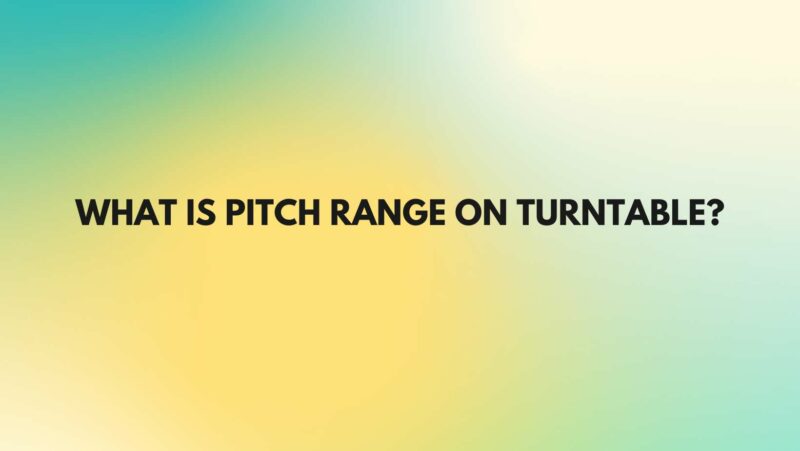Pitch control is an essential feature on many turntables, allowing DJs, audiophiles, and vinyl enthusiasts to adjust the playback speed and manipulate the pitch of their vinyl records. In this comprehensive guide, we will explore what pitch range means on a turntable, why it matters, and how it influences your vinyl listening experience.
Section 1: Defining Pitch Range
Pitch range on a turntable refers to the degree to which you can adjust the playback speed or pitch of a vinyl record. It is usually expressed as a percentage or a range in pitch units (e.g., +/- 8%, +/- 10%, +/- 20%).
For example, a turntable with a pitch range of +/- 10% means that you can increase or decrease the playback speed by up to 10% of the original speed. This adjustment allows for fine-tuning the pitch of the music to match other tracks or achieve specific creative effects.
Section 2: The Importance of Pitch Range
The pitch range on a turntable is essential for several reasons:
- Beatmatching and Mixing (for DJs): DJs use pitch control to match the beats and tempos of two songs, enabling seamless transitions between tracks during a performance.
- Correcting Pitch Errors: Vinyl records can have slight variations in playback speed due to manufacturing differences or wear over time. The pitch control allows users to correct these errors and maintain accurate pitch.
- Creative Manipulation: Musicians and DJs often use pitch control to create unique effects and remixes by altering the pitch of specific sections of a song or introducing pitch modulation.
- Maintaining Pitch Standards: Pitch control helps maintain pitch standards in music production. It ensures that vinyl records play at the correct pitch, preserving the integrity of the music.
Section 3: Types of Pitch Controls
There are two primary types of pitch controls found on turntables:
- Manual Pitch Control: Manual pitch control is common on traditional turntables. It requires the user to physically adjust a pitch slider or knob to achieve the desired pitch. The range is determined by the design of the turntable.
- Digital Pitch Control: Some modern turntables, especially those used in DJing, feature digital pitch control. This allows for precise adjustments and often provides a wider pitch range, frequently going beyond the typical +/- 10% found on manual turntables.
Section 4: How to Use Pitch Control
Using pitch control effectively depends on your specific goals and the type of turntable you have:
- Beatmatching (for DJs): DJs use pitch control to match the beats of two songs. To do this, they adjust the pitch until the beats are in sync, typically by listening through headphones.
- Pitch Correction: When playing records with pitch discrepancies, adjust the pitch control until the music sounds natural and matches the intended pitch.
- Creative Effects: Experiment with pitch control to create unique sound effects, such as pitch bending, slowing down, or speeding up portions of a song for artistic purposes.
- Maintaining Standard Pitch: Ensure that your turntable’s pitch control is set to 0% when playing records that should be at standard pitch (e.g., most music albums).
Section 5: Conclusion
In conclusion, pitch range on a turntable is a crucial feature that allows users to adjust the playback speed and pitch of vinyl records. Whether you’re a DJ aiming for beatmatching precision, a vinyl enthusiast maintaining pitch standards, or a creative musician exploring unique effects, understanding and utilizing pitch control is essential for achieving the desired sound and musicality in your vinyl listening or performance experience. The ability to fine-tune pitch ensures that your vinyl records sound as they were intended and allows for creative experimentation in the world of music and DJing.

